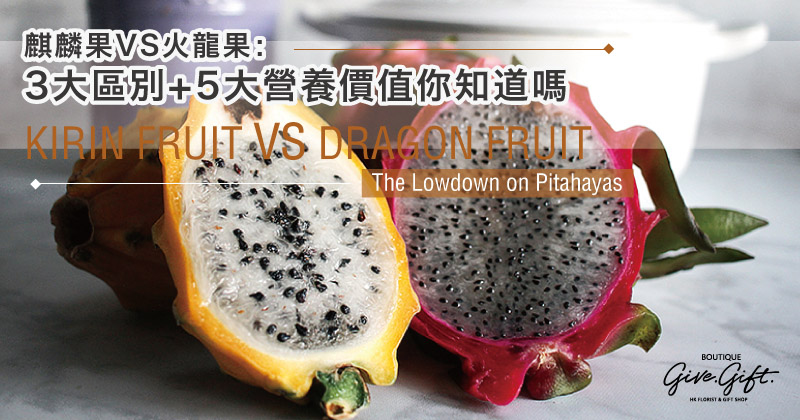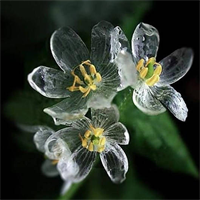Kirin fruit, the yellow skin fruit with some resemblance to a dragon fruit, has risen to stardom in recent years. This exotic fruit has received a lot of attention in the media and is labelled as the magical fruit with numerous health benefits. With an appearance similar to a dragon fruit, are there differences between the two?
We commonly refer to the two varieties of red-skinned fruits as dragon fruit, but formally speaking, the kirin fruit is merely another type of dragon fruit. In fact, pitahaya is the collective term describing all three varieties of dragon fruits. Indigenous to Central and South America, pitahayas are edible fruits grown on Hylocereus, a type of cactus species. Because they grow and thrive in arid climates, they are now widely cultivated in tropical and sub-tropical parts of the world. The distinctive differences in appearance, colour and taste between the types of pitahaya come down to the type of species.
Despite the variations in appearance amongst the three species of pitahayas, they all have an incredibly juicy flesh with an earthy watermelon taste, black edible seeds, and a kiwi-like texture.
| Common name / Characteristics | White dragon fruit | Red dragon fruit | Kirin fruit |
|---|---|---|---|
| Species name | Hylocereus undatus | Hylocereus costaricensis | Hylocereus megalanthus |
| Cultivating countries | China Israel Thailand Vietnam United States |
China Israel Malaysia Thailand Nicaragua Vietnam United States |
Colombia Ecuador Israel |
| Appearance | Red outer skin; White flesh with black seeds | Red outer skin; Red flesh with black seeds | Yellow outer skin; white flesh with black seeds |
| Sweetness | Least sweet of all pitahayas | Sweeter than white dragon fruit | Sweetest of all pitahayas |
Why include pitahayas as part of your diet?
All varieties of pitahayas offer the same health benefits, including:
• Dietary fibre
- Helps with maintaining a healthy gut, increases stool transit time and prevents constipation
- Manages your blood glucose levels by slowing down the absorption of carbohydrates
- Soluble fibre, in particular, binds with cholesterol and fat in your diet and gets rid of them through the stools
• Magnesium
- An essential mineral for muscles, nerves and bones
• Phosphorus
- An important nutrient that supports growth, plays a role in storing and using energy and works alongside with calcium for building healthy bones and teeth
• Potassium
- A vital mineral for regulating blood pressure, and maintaining electrolyte balance and cell function
• Vitamin C
- An important nutrient for the immune system, for making collagen to promote skin elasticity and to prevent wrinkles, and for promoting wound healing While pitahayas provide the feeling of fullness and are beneficial to include as part of a diet to maintain a healthy body weight, eating too much may give a laxative effect.
Nutrition Information
| Serving Size | Per 100 grams |
|---|---|
| Calories (kcal) | 56 |
| Fat (g) | 1.4 |
| Saturated Fat (g) | 0.13 |
| Trans Fat (g) | N/A |
| Cholesterol (mg) | 0 |
| Carbohydrates (g) | 9.6 |
| Dietary Fibre (g) | 1.7 |
| Sugars (g) | 7.6 |
| Protein (g) | 1.1 |
| Calcium (mg) | 5.8 |
| Iron (mg) | 0 |
| Magnesium (mg) | 32 |
| Manganese (mg) | 0 |
| Phosphorus (mg) | 31 |
| Potassium (mg) | 270 |
| Sodium (mg) | 0 |
| Zinc (mg) | 0 |
| Vitamin C (mg) | 9 |
Source: Centre for Food Safety, 2017.
At Give.Gift.Boutique, we specialize in providing customized gourmet hampers and fresh fruit baskets, for any occasion. Including exotic fruits like pitahayas makes the hamper stand out as one of a kind.
Send a thoughtful gift to that special someone by browsing through our large selection of offerings here.
This is a Hong Kong GGB original 'Kirin Fruit Versus Dragon Fruit: The Lowdown on Pitahayas' blogpost.
















 Share
Share Tweet
Tweet +1
+1  Pin it
Pin it Post
Post  Weibo
Weibo Review
Review



















 Diwali Gifts
Diwali Gifts 
 ▶
▶